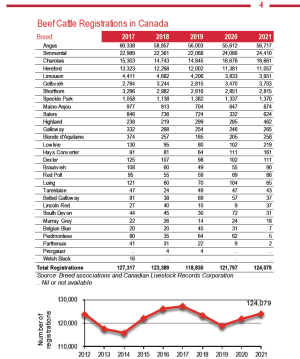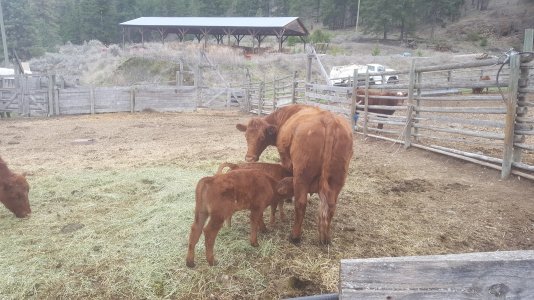Not that it matters but the Corriente's I have been around were/are uncanny smart which leads me to the question,
What has this discussion to do with the Pharo Cattle Company?
Well to refocus, below is what I think has been explicitly said, somewhat implied and can be inferred from this thread.
The Pharo Cattle Company:
1) Has become quite known in the cattle world over these past 15 or so years. They seem to have been successful because they a) offer a different model than the mainstream market, b) boost that model with a bit of counter-culture rhetoric along with the prospect of selling the progeny of their beef to the organic and/or grass-fed market c) provide an experience at their auction that makes the newer herd-builders feel a bit more safe and taken care of and d) have expanded into newer markets at regular intervals to protect themselves if one single market weakens.
2) Has a model that seems to have been competently expanded by strong-minded leadership that is not afraid to provide black and white answers to many customers who need them, especially if those customers feel passionate about doing something new in today's complex market.
3) Offers different cattle than other breeders. They use Angus/Mashona genetics. The Pharo cattle are much smaller framed (frame scores 2.5 to maybe frame score 4), and their main claim to profitability is that these cattle are more efficient and can produce more pounds of beef per acre.
4) They claim that their genetics can go 'anywhere' and thrive, from down in hot Texas to up in cold Nebraska or maybe even Canada.
The critique of the company by some people in this thread were:
1) The cattle don't produce calves that you can market anywhere but retail, so they really take away from your ability to take advantage of multiple marketing avenues if economic situations change. If one has to send those cattle to the local auction market, some even intimated that it was the producer who was the one going to slaughter.
2) The cattle, especially some of their bulls, don't seem hold up to an experienced cattleman's eye when it comes to good confirmation, even when one is talking about only being raised on grass.
3) With what we know about cattle genetics, it doesn't really hold up that a smaller Angus/Mashona type cow can thrive up north. After all, with ruminants like cattle, when it gets really cold they are going to need a bit more weight/energy storage to stay warm. Perhaps the larger 'guts' on the grass-fed cattle help with this, but many experienced cattleman seemed to have some reservations. And common sense tells us that the farther north you go, the less acclimated cows like Brahmans and Mashona cattle and their resulting crosses would be. And, if you were going to breed for that, it would probably take much longer than 20 years at the Pharo Cattle Co's herd numbers etc.
4) Solid proof/testimonials that the Pharo cattle have made the producers that buy their bulls any money hasn't been seen by may people who joined this thread, if any. Testimonials have been posted where the producer regretted going that route. Some people thought the company's success might be the result of good marketing and/or riding the grass-fed/organic meat wave that producers are jumping into with capital with the hopes of future returns, but there really hasn't been as much solid proof that jumping on the Pharo cattle model is sustainable for the long-term producer. But proof of failure to profit also hasn't really been presented, either.
So how did we end up discussing Corriente cattle?
1) If you want smaller-framed cattle that do well on grass and produce more pound per acre (which is one of the main selling points of Pharo cattle, Corriente are already the ready-made solution that exist out there. a) They are already suited to the environment, b) they max out at around 600lbs for the females so you can run more Corrientes per acre, c) they breed back really good in average condition, and d) they are lower maintenance than many other types of cattle.
2) Many cattlemen feel there is a big likelihood that you will make more money on using Corrientes crossed back to a beef bull, not because they or their progeny are higher-quality cattle, but because the initial capital investment (buying tens of thousands of dollars of grass-fed genetics vs. Corrientes at 350$ a head or so) and subsequent input costs (feed costs) are lower. Your ROE is likely to be better while at the same time your risk/reward outlook is a bit rosier, all the while keeping your management input/marketing costs lower.
3) People on this site just like to talk about cattle, so topics also tend to wander hither and yonder

.
Hope this helps.



